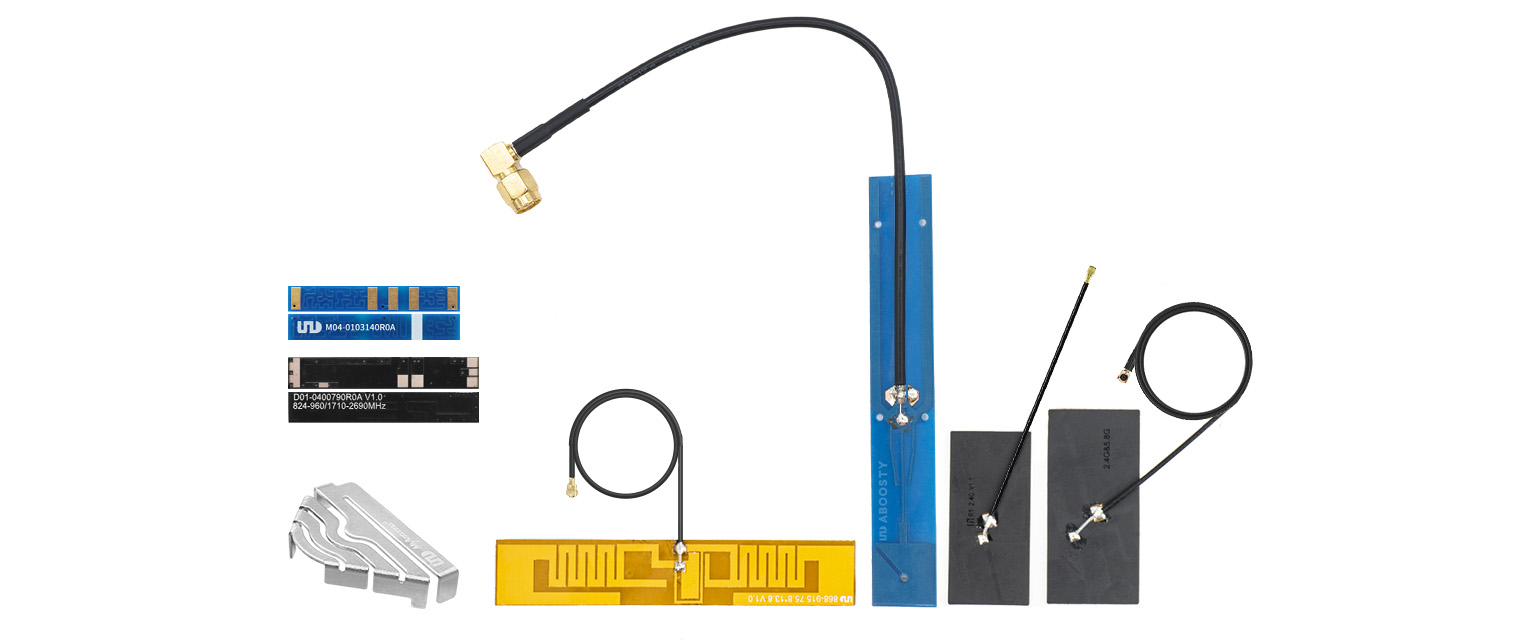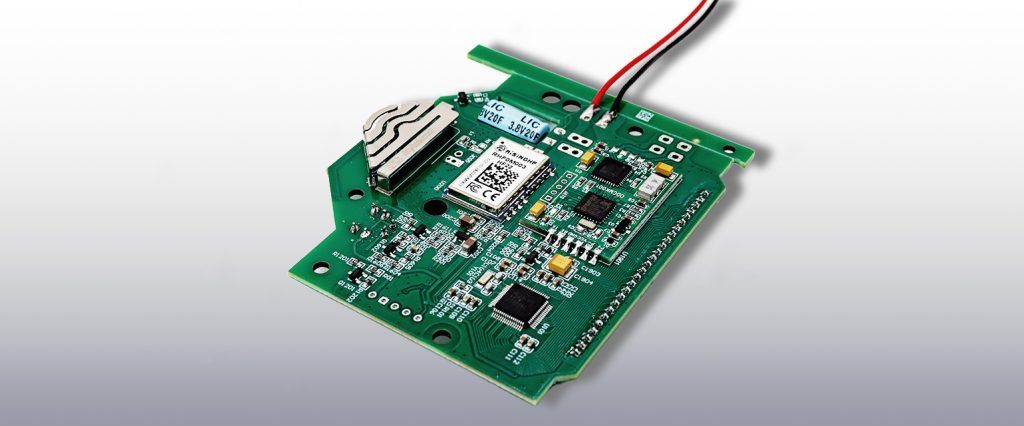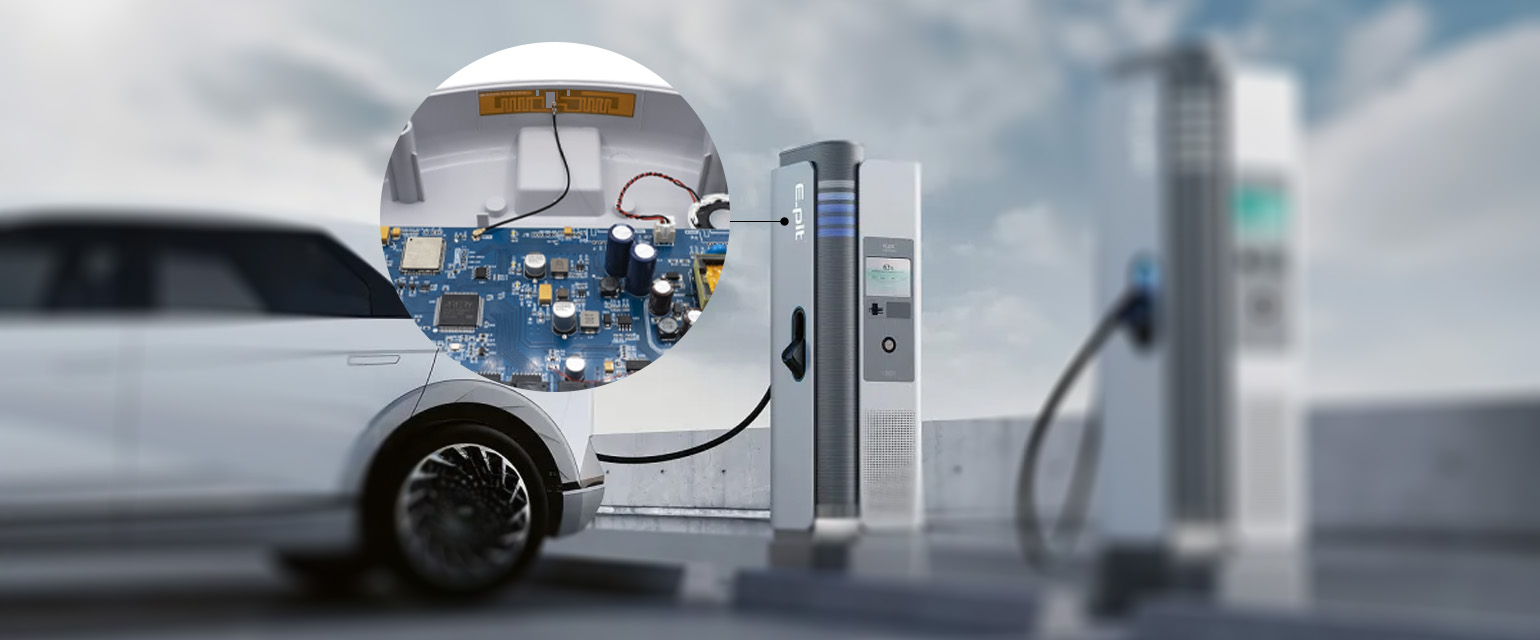The Internet of Things (IoT) continues to transform industries, from manufacturing to healthcare, by connecting millions of devices that gather and share data. In the era of Industry 4.0 or the fourth industrial revolution, IoT is pivotal in enabling smarter, more interconnected systems that enhance operational efficiency and data-driven decision-making. Embedded antennas are critical components in these IoT devices, enabling reliable communication by bridging the gap between devices and the networks they rely on. As IoT expands, the need for efficient, multi-band, and low-power antennas becomes increasingly urgent. This article goes deep into the role of embedded antennas in IoT, explores design challenges, examines innovative solutions, provides application examples, and outlines future trends in the field.
IoT Overview
The IoT ecosystem comprises interconnected devices capable of gathering, processing, and transmitting data over networks. By 2030, IoT is expected to encompass billions of devices globally, enhancing everything from smart homes to industrial systems. Embedded antennas are pivotal in ensuring these devices can communicate efficiently across different environments and distances. Unlike traditional external antennas, internal antennas (including chip antennas or SMD antennas) are compact and integrate directly into the device, which makes them suitable for space-constrained applications such as wearables, home automation, and industrial monitoring systems.

Embedded Antenna Challenges
Designing embedded antennas for IoT applications involves several key challenges to overcome:
- IoT devices are often small and densely packed with components, leaving minimal space for antennas. However, reducing the size of an antenna can degrade performance by affecting signal range and strength. Innovations like reconfigurable antennas help address this issue by adapting their properties (e.g., frequency or radiation pattern) based on environmental requirements.
- IoT devices frequently need to communicate across multiple frequencies to interact with different networks (e.g., Wi-Fi, Bluetooth, cellular). Multi-band antennas can handle this demand, enabling devices to seamlessly switch between networks without requiring multiple physical antennas. Reconfigurable and tunable antennas allow designers to maximize performance across frequencies without expanding device size.
- As IoT deployments grow, so does wireless traffic, increasing the risk of interference between devices. High-efficiency antennas designed with careful impedance matching and optimized placement can minimize interference. Additionally, directional or highly selective antennas are often used to focus signals and reduce unwanted noise, essential in densely populated environments like smart buildings.
- Many IoT devices are battery-operated and need antennas that consume minimal power to extend battery life. This is particularly critical for devices in remote or difficult-to-access locations. Technologies like low-power wide-area networks (LPWAN) and energy-efficient antenna materials contribute to longer operational lifespans for these devices.
Design Innovations in IoT Antennas
Recent advances in IoT antenna technology address the constraints of embedded designs:
- Reconfigurable antennas adapt their frequency, radiation pattern, or polarization in real-time, allowing them to respond dynamically to changing connectivity needs. Electrical reconfiguration techniques, often using varactor diodes or tunable capacitors, have become popular due to their cost-effectiveness and compactness. Reconfigurable antennas are particularly useful in devices where space is limited, but multi-band capabilities are necessary.
- For ultra-compact devices, antenna boosters have emerged as a solution to enhance performance without increasing the antenna size. These boosters use resonant structures to amplify signals, improving range and reducing power consumption. By incorporating these boosters, engineers can achieve better connectivity in wearables, sensors, and other small devices.
- SMD antennas are small, lightweight, and can be mounted directly on circuit boards, making them ideal for automated manufacturing processes. Patch antennas are also widely used in IoT applications that require broader coverage and reliable connectivity. Additionally, surface-mount antennas maintain a low profile while providing reliable performance across a range of IoT applications, from smart home devices to industrial equipment.

Application Examples of Embedded Antennas
Embedded antennas are central to various IoT applications across multiple sectors:
- In urban environments, antennas in smart meters, sensors, and cameras enable real-time data collection for utility management, traffic monitoring, and security. For instance, MIMO (multiple-input, multiple-output) antennas enhance connectivity in smart buildings, where they handle high data loads from multiple devices, supporting systems like lighting control, HVAC, and surveillance.
- In the IIoT scope, embedded antennas in machinery and sensors enable predictive maintenance, real-time asset tracking, and process automation. Reconfigurable antennas are particularly beneficial in industrial environments, where they can adapt to different frequencies and minimize interference from surrounding metal structures. This flexibility is critical in harsh environments that require rugged, resilient antennas.
- Wearable IoT devices, such as fitness trackers and medical monitors, rely on compact, low-power antennas to communicate with smartphones or cloud services. Chip antennas and PCB antennas are common in these applications due to their small size and ability to integrate into device enclosures. In healthcare settings, wearable devices use embedded antennas for continuous patient monitoring, enabling real-time health data transmission without frequent battery recharging.

Future Trends
The future of IoT antenna design will likely be driven by advancements in the following areas:
- As IoT begins to leverage 5G networks, the demand for high-frequency, high-bandwidth antennas will increase. Smart antenna technologies, such as beamforming and MIMO configurations, will become more prevalent in applications requiring rapid data transfer and low latency, such as autonomous vehicles and remote surgeries.
- To further reduce power consumption, researchers are exploring antennas that harvest ambient energy from sources like radio waves, solar power, or thermal gradients. These antennas could power low-energy IoT sensors indefinitely, enhancing the sustainability and feasibility of IoT in remote areas.
- Artificial intelligence (AI) is set to revolutionize antenna design by enabling automated, data-driven optimizations. AI algorithms can analyze usage patterns and environmental factors to adjust antenna parameters dynamically, optimizing connectivity and power efficiency based on real-world conditions. This adaptive approach will be especially beneficial in complex environments like smart cities.
Integrate the Right Antenna for Your IoT Device with Aboosty
As Industry 4.0 reshapes sectors worldwide, seamless device interoperability has held the key to enhanced operational efficiency. At the core of this interoperability lies the rapidly evolving IoT network, where embedded antenna integration plays a key role in building a robust, future-ready foundation.
At Aboosty, we offer not only high-performance, customized antenna solutions, but also a diverse portfolio of antennas that support 5G, GNSS, Wi-Fi, LoRa, and mmWave standards. With ISO9001 and IATF16949 certifications, Aboosty ensures reliable, high-quality antenna production that meets rigorous industry standards globally. Whether you need antennas that prioritize power efficiency, peak performance, compact design, or a combination of these features, Aboosty has the right solution for your needs.
If you would like to find out more about our wide range of high-performance and efficient antennas, do not hesitate to contact the Aboosty team now.
FAQs
What types of embedded antennas are common in IoT, and how are they chosen?
Chip, PCB, flexible, and patch antennas are common. Selection depends on device size, range, and application. Chip antennas suit compact devices; PCB antennas are economical for medium-range; flexible antennas fit wearables.
How do environmental factors affect embedded antenna performance?
Temperature, humidity, and obstacles like walls impact performance. High temperatures alter materials; metals cause signal interference. Industrial IoT antennas use shielding and durable materials to resist these effects.
What regulatory requirements exist for IoT antennas?
The FCC regulates U.S. wireless devices; the EU has the Radio Equipment Directive (RED). Compliance with frequency, power, and safety standards is essential, especially for cellular-connected IoT devices.
What interference issues face embedded antennas?
Common issues include blockage by dense materials and EMI from electronics. Solutions include using high-selectivity antennas, optimized PCB layouts, and applying shielding techniques.
What role do ground planes play in antenna performance?
Ground planes enhance signal strength and radiation patterns in monopole and chip antennas. Limited space in IoT devices often requires optimized PCB designs for effective ground planes.
How does antenna design impact battery life in portable IoT devices?
High-efficiency antennas reduce power usage, extending battery life. Design techniques like minimizing impedance mismatches and using energy-harvesting antennas are crucial for longevity.
What advancements support antenna miniaturization?
New materials like metamaterials and dielectric resonators allow miniature antennas to maintain performance in small designs. Reconfigurable antennas, like chip and SMD antennas, also adjust properties based on needs, ideal for compact sensors and wearables.
Why are reconfigurable antennas valuable for IoT?
Reconfigurable antennas adapt frequency and radiation patterns, offering versatility in multi-band IoT devices, and reducing the need for multiple antennas.
What challenges do embedded antennas face in high-frequency applications like 5G?
High-frequency signals attenuate quickly and face interference. High-efficiency, directional antennas using low-loss materials help maintain performance. MIMO configurations improve signal handling.
How does AI optimize IoT antenna design?
AI analyzes usage patterns and adjusts antenna parameters, improving performance in dynamic environments like smart cities.
What are LPWAN antennas, and why are they important for IoT?
LPWAN antennas enable long-range, low-power communication for remote IoT applications like agriculture and asset tracking, supporting protocols like LoRa and NB-IoT for energy efficiency.

One Response
Your article helped me a lot, is there any more related content? Thanks!